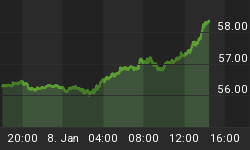
It seems like yesterday that markets rose and fell like a synchronized swim team - floundering through a tired routine. Back in 2011, markets were so tightly correlated that if a "swimmer" fell off-balance in trend, snap reversions could be arbitraged quickly - assuming you had a handle on the markets flow. For example, if you had good intuition on what was going on in the currency markets, you could trade with greater execution and frequency through the commodity and equity markets - and vice versa. In 2012, that extreme in correlations began to thaw; although still historically tight and most notable between some of the long term drivers between the currency and commodity markets.
Year to date, the correlation environment continues to shift which has translated into some confusion as expectations pass through the markets many gear exchanges. As noted - and to a large degree expected; long-term relationships have been skewed towards some rather strange bedfellows. The bond market sells off - the stock market sells off. The dollar weakens - precious metals weaken (not expected). The bond market sells off - the dollar sells off. Whether its an artifact of increased intervention from a variety of different motivations and interests, or just nature's way these days - we've come along way since 2011. What we can do for bearings today? Continue working with those assets that have wagged the system with greatest affect.
A few weeks back, we had commented on the similar asset structures and motivations of risk appetites between QE2 and QE3. We had highlighted silver during the buildup and bust of Bernanke's second salvo and the SPX during the bolus of his third.
 |
In hindsight, the SPX did pivot lower where the study had expected it would. However, the closer comparative - both in magnitude of gains and corrective structure to silver's blowoff run in 2011 - is the Nikkei today.
It's safe to say that both silver and the Nikkei were THE risk cocktails for each periods pronounced gains; whereas, the markets monetary handlers had brought participants noses back to the trough to feed (through a perceived weakened currency) - then gallop, in the asset meadows that would most benefit its yield. What's noteworthy with the latest behavioral whip, is the overlap between what the Fed attempted with QE3 and the secondary and more explosive intervention in Japan with the introduction of Abeonomics in November.
Going forward, we will be keeping a close eye on the Nikkei and add it to our comparative series with the yen which has pointed for several months to a material pivot higher in this timeframe. In the short term, the comparative calls for a retest of the Nikkei's 50 day SMA.
 |
All things considered, you could make the argument that although QE3 appeared to be floundering coming into the end of last year; through the backdoor of the yen - the SPX succeeded in breaking through the Meridian's overhead resistance. Although it might not have been organically sowed, QE2 brought the equity markets back to kiss long-term resistance in 2011 - and the enunciations of Carry Trade Abe helped bust through the hedgerow this year.

Despite languishing in some reversionary weeds, we still expect the gold miners to follow the yen higher over the intermediate time frame.
Taking its time and consolidating with the equity markets, Apple looks poised to take another leg higher soon.
As expected (although the precious metals have little to show for it so far), the US dollar index continues to get hit with both of the biggest mallets from the euro and the yen.
We are keeping very close tabs on the CRB to see if it confirms the shift in perspective of the US dollar. Discrete positive divergences in momentum and strength have recently been noted.
-
All stock chart data originally sourced and courtesy of www.stockcharts.com
-
Subsequent overlays and renderings completed by Market Anthropology




























